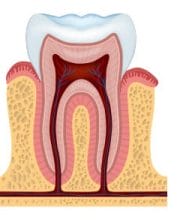
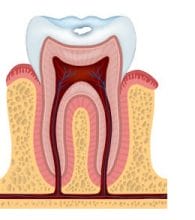
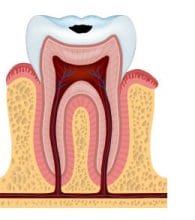
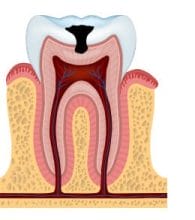
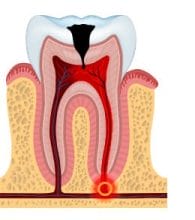
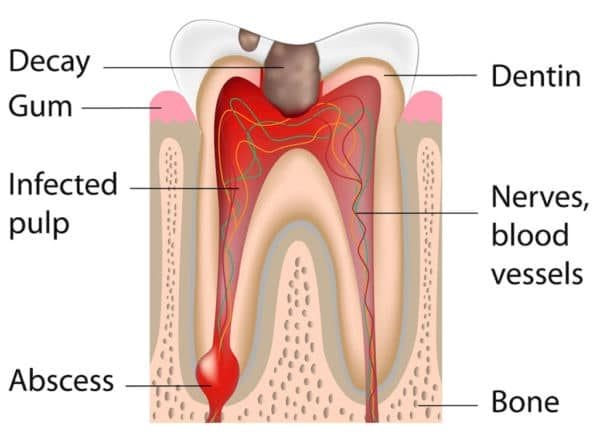
Cavities don’t happen overnight. Sugars and starch from the food you eat feed bacteria in your mouth. That bacteria turns into plaque that can build up on your teeth and damage the tooth enamel. There are 5 distinct stages of tooth decay. Cavities start as tiny holes and grow bigger over time unless preventative and restorative measures are taken.
That’s why regular bi-annual visits with your dentist are critical to get cleanings that remove plaque and assessments of overall dental health.
The Stages Of Tooth Decay
Here’s how tooth decay advances to become a cavity:
Stage One: Initial Demineralization
Small white spots appear under the surface of the tooth enamel, which contains minerals. The damage causes demineralization. The loss of minerals is the first step of tooth decay.
Reversing a cavity is possible in this stage is possible by remineralizing the enamel with fluoride.
Stage Two
If this tooth decay goes unnoticed, the enamel damage will continue, possibly causing the tooth to darken. Small holes — dental caries — appear in the weakened enamel.
This damage is not reversible, but your dentist can fill the cavities before they expand and cause more serious issues.
Stage Three: Advanced Cavity
If the decay continues, it breaks down the enamel until it hits the soft dentin layer beneath the surface.
At this point, your dentist can still fill the cavity to prevent further degradation.
Stage Four: Pulp Damage
The innermost layer of your teeth is pulp, which contains blood vessels and nerves. Damage at this level is what causes toothaches from pressure on the nerves.
At this stage, a root canal is usually needed to remove the damaged pulp, then clean and fill the cavity.
Stage Five: Abscess
In certain cases, we might not catch the tooth decay at stage four and properly treat it with a root canal. As such, the bacteria can enter the pulp and cause an infection that produces pus that forms at the bottom of a tooth called an abscess.
Without prompt treatment, the infection can spread to the jaw bone and other parts of the head cause intense pain.
A root canal requires removal of the infection and try to salvage the tooth. In advanced cases, the tooth may need to be removed.
Do I Have A Cavity?
If you have questions for a dentist, contact Shorewood Family Dental Care, a family dentist near Joliet. Call 815-725-5991 or book an appointment online.




